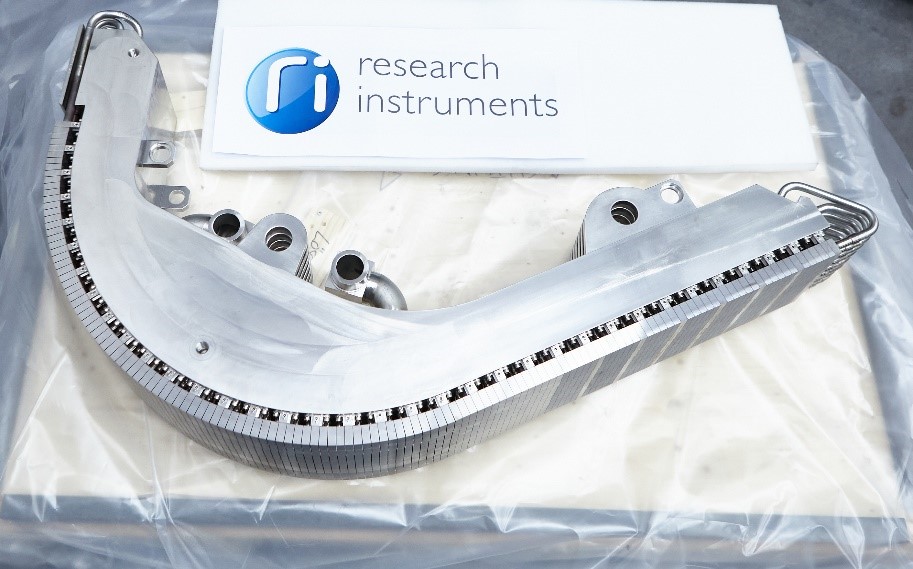Europe to start manufacturing a series of Inner Vertical Targets

Inner-Vertical Target prototype produced by Research Instruments, Germany. ©RI
The ITER Divertor is one of the components that will be exposed to some of the highest temperatures inside the biggest fusion device. A total of 54 pieces of equipment, known as ITER Divertor Cassettes, will be inserted in the lower part of the machine to form a massive “ashtray” where the plasma impurities will fall. Each of them will benefit from a protective component known as the Inner Vertical Target, that will intercept the super-hot plasma particles driven by the powerful magnetic field.
Manufacturing these components is a learning journey worth taking because it helps European companies to acquire new skills. Their complexity requires from those involved patience, creativity testing new tools, validating processes, and hard work to comply with the stringent specifications. The more inclusive this journey is, the fairer it becomes by promoting a level of competition and the possibility to pick up new skills. For this reason, F4E developed a procurement strategy involving in parallel several entities to experiment with prototypes. Those successful, qualify to compete for the production of the components destined for the ITER device.
F4E has undertaken the responsibility to manufacture 58 Inner-Vertical Targets (IVTs) to match the production of 54 cassettes plus 4 spares. Their fabrication will be structured in stages. In a call for tender previously launched, three companies made it to the finish line qualifying for the production of IVTs: AES Consortium (Ansaldo Nucleare, Ansaldo Energia and SIMIC), Alsymex, and Research Instruments (RI). This allows F4E to explore the manufacturing of these components in sequence with the three entities, should there be any complications. Currently, one contract has been signed with RI to produce 13 IVTs, expected to be completed by 2027. Through another contract, the production of another series of 13 IVTs will follow.
Pierre Gavila, F4E In-Vessel Project Manager responsible for this procurement, reflects on this new chapter of manufacturing. “We have come a long way from trying to understand if and how we can manufacture this complex component…to how many can manufacture it. The result is rewarding because along the way we tested different manufacturing techniques, managed to engage with companies which were less familiar with fusion, and arrived at a level playing field offering healthy competition. The start of production is the beginning of an exciting chapter where we will put all know-how into practice. I would like to thank all these entities that have been part of this journey for their commitment and good cooperation.”